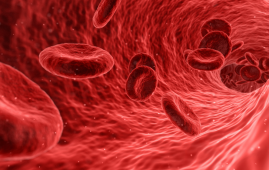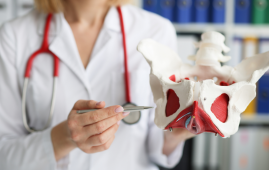

Summary / Key Points
A UCLA Health study published in Genome Medicine reveals that measuring cell-free DNA (cfDNA) in the blood could allow for earlier and more accurate ALS diagnosis. The test differentiates ALS from other neurological disorders and gauges disease severity, offering neurologists a noninvasive diagnostic tool that may improve care and survival outcomes.
A New Path Toward Early ALS Diagnosis
A team at UCLA Health, in collaboration with the University of Queensland, has developed a simple blood test that measures cell-free DNA, fragments shed into the bloodstream by dying cells, to identify amyotrophic lateral sclerosis (ALS) more quickly and accurately.
Published in Genome Medicine, the study introduces cell-free DNA (cfDNA) as a potential biomarker for ALS, showing that distinct DNA methylation patterns can signal neurodegenerative activity in ALS patients. The findings could help neurologists detect disease earlier, differentiate ALS from other motor neuron disorders, and make treatment decisions sooner.
Explore All Neurology CME/CE Conferences and Online Courses
Why a Blood-Based Biomarker Matters for ALS Care
ALS, or Lou Gehrig’s disease, progressively destroys motor neurons in the brain and spinal cord, leading to muscle weakness and respiratory failure. Most patients are diagnosed between the ages of 50–70, with a life expectancy of just 2–5 years after diagnosis. Current diagnostic approaches rely on exclusion, ruling out other conditions, which delays intervention.
Lead author Dr. Christa Caggiano, postdoctoral fellow at UCLA’s Neurology Department, emphasized the need for a reliable biomarker:
“Our study presents cell-free DNA, combined with a machine learning model, as a promising candidate to fill this gap.”
The research showed that cfDNA-based signatures not only distinguish ALS patients from healthy individuals but also from those with other neurological diseases, an advancement over existing biomarkers.
Potential to Transform Diagnostic Speed and Precision
The cfDNA test also revealed unique signals from muscle and immune cells, underscoring ALS’s systemic impact beyond motor neurons. By integrating these molecular patterns with machine learning models, researchers achieved accurate classification of disease presence and severity.
This noninvasive diagnostic method could:
- Enable faster ALS detection and reduce diagnostic uncertainty
- Improve patient management and clinical trial enrollment
- Support personalized treatment strategies for disease monitoring
However, researchers caution that larger, diverse clinical studies are needed before the test becomes standard practice. UCLA Health and its partners are currently conducting expanded validation trials.
What Clinicians Should Watch For
For neurologists, nurse specialists, and clinical researchers, this emerging biomarker could soon enhance diagnostic confidence and accelerate therapeutic interventions for ALS. Continued collaboration between clinical and molecular researchers may be key to bringing this test into real-world neurology practice.
Source:
University of California – Los Angeles Health Sciences
more recommended stories
 Fat-Regulating Enzyme Offers New Target for Obesity
Fat-Regulating Enzyme Offers New Target for ObesityKey Highlights (Quick Summary) Researchers identified.
 Spatial Computing Explains How Brain Organizes Cognition
Spatial Computing Explains How Brain Organizes CognitionKey Takeaways (Quick Summary) MIT researchers.
 Gestational Diabetes Risk Identified by Blood Metabolites
Gestational Diabetes Risk Identified by Blood MetabolitesKey Takeaways (Quick Summary for Clinicians).
 Phage Therapy Study Reveals RNA-Based Infection Control
Phage Therapy Study Reveals RNA-Based Infection ControlKey Takeaways (Quick Summary) Researchers uncovered.
 Pelvic Floor Disorders: Treatable Yet Often Ignored
Pelvic Floor Disorders: Treatable Yet Often IgnoredKey Takeaways (Quick Summary) Pelvic floor.
 Urine-Based microRNA Aging Clock Predicts Biological Age
Urine-Based microRNA Aging Clock Predicts Biological AgeKey Takeaways (Quick Summary) Researchers developed.
 Circadian Control of Neutrophils in Myocardial Infarction
Circadian Control of Neutrophils in Myocardial InfarctionKey Takeaways for HCPs Neutrophil activity.
 E-Cigarette Use and Heart Attack Risk in Former Smokers
E-Cigarette Use and Heart Attack Risk in Former SmokersKey Takeaways for Clinicians and Nurses.
 36-Week Pre-eclampsia Screening May Reduce Term Risk
36-Week Pre-eclampsia Screening May Reduce Term RiskA New Preventive Strategy for Term.
 Cardiovascular Risk and Sudden Cardiac Death in Diabetes
Cardiovascular Risk and Sudden Cardiac Death in DiabetesRising Sudden Cardiac Death (SCD) Risk.

Leave a Comment